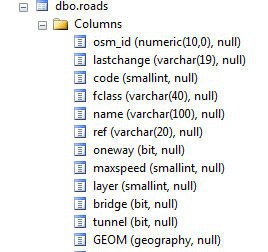Hi Bob!
According to the Open Street Map Wiki, one-way streets SHOULD be drawn in the direction of travel: wiki.openstreetmap.org/wiki/One_way
So it would seem an direction 'Indicator' column is not necessary, provided that everyone adding data to Open Street Map follows the convention of drawing the streets in the direction they travel. ![]()
There may be some OSM review process to verify that one-way streets are properly entered, but I can neither confirm or deny that this action takes place. You may want to conduct your own review of some one-way streets to see if they route properly or contact the Open Street Map Community to see if they have information on their data review processes.
For the creation of your One-Way street aware RTG file I again refer to the BuildingRoutingData sample application where we are checking for the Indicator value. As the features in the OpenStreetMap data SHOULD be in the direction of travel you would want to set the following for each RouteSegment that is One-Way:
e.RouteSegment.StartPointAdjacentIds.Clear();
On the surface using an InMemoryFeatureLayer for your Features sounds like a fine idea, however I know you are encountering some exceptions with this so we should investigate these further in the other thread: gis.thinkgeo.com/Support/Dis...fault.aspx

